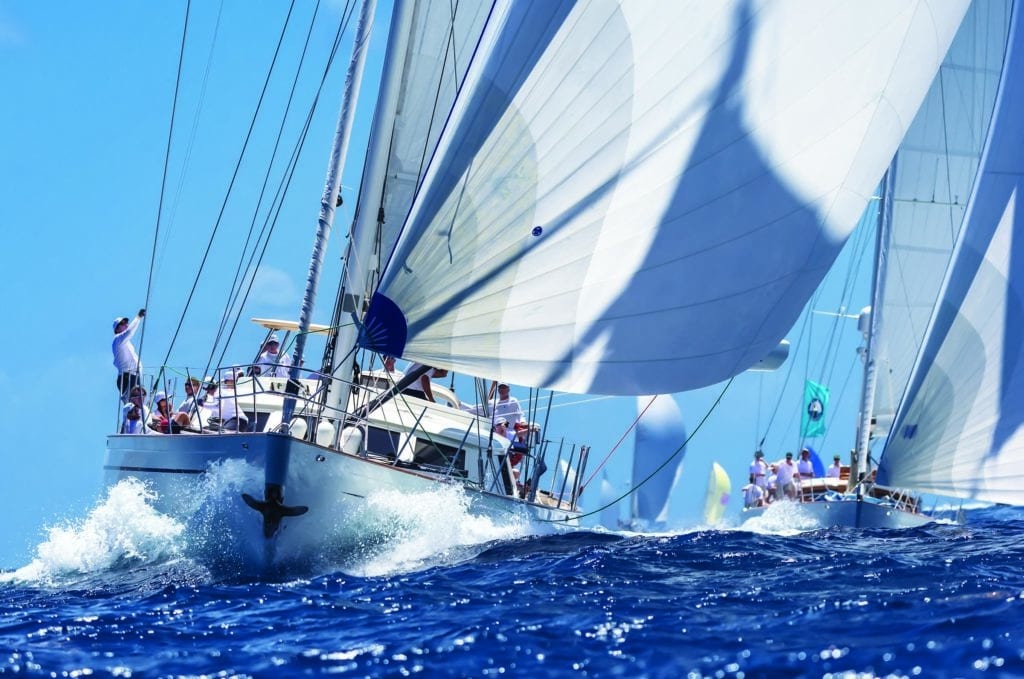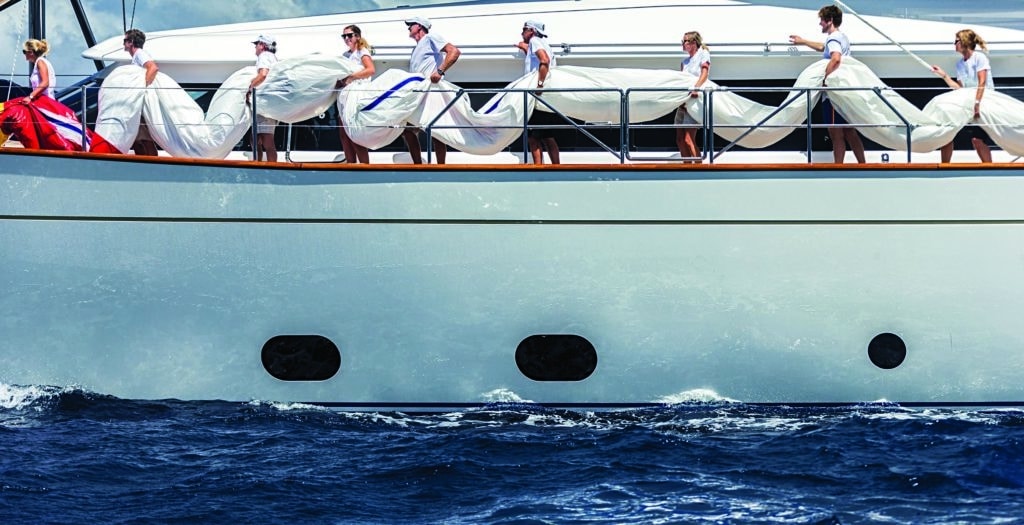The Superyachts in the recent Loro Piana Caribbean Superyacht Regatta in Virgin Gorda and the St. Barths Bucket Regatta were a site to behold: dozens of magnificent luxury yachts, full sail and racing hard, in two of the most picturesque venues in the world. The scale, power, and beauty of these vessels, spanning 85 to 200 feet in length, are staggering. None of them are remotely alike, but under their new rating rule, the racing is now practically boat on boat.
Racing yachts this large requires special skills, not only for the crews that wrestle thousands of square feet of sail area, but also for the tacticians and helmsmen, who have specific right-of-way rules to avoid collisions among these unwieldy craft The boats are manned by the new and old guard of the America’s Cup, Volvo Ocean Race, and other big grand-prix programs. Their sail handling skills and experience are required in this increasingly competitive scene.
And there are other special skills needed in providing fair and fun racing appropriate to these monstrosities. For example, races are run with individual start times to keep everyone separated and sailing in clear air, so the handicapping system has to be effective across an enormous range of sizes and styles of yachts. A typical Superyacht fleet includes schooners, sloops, and ketches of varying lengths and with displacements ranging from 50 to 600 tons. This huge disparity in yacht type, size, and shape is exceptionally difficult to handicap, so last year the Super Yacht Racing Association partnered with the Offshore Racing Congress to tackle the problem, and came out with the ORC Superyacht Rule, aka ORCsy.
Most rating rules work by determining the performance potential through measurements of the speed-producing (and speed-inhibiting) elements of the design. These include length, sail area, displacement, draft, stability, etc. The ORC has developed a sophisticated Velocity Prediction Program to predict this potential and uses it to provide ratings more than 9,000 boats in 40 countries.
But the VPP used for typical racers and crossovers had to be modified to suit Superyachts, so designer Jim Taylor and race director Peter Craig from SYRA worked with Andy Claughton from the Wolfson Unit at Univ. of Southampton and ORC to take into account features unique to Superyachts, such as radar dome dimensions, superstructures windage, tankage capacity, furling headsails and whether they had to be furled when tacking. The system had to then be programmed for online data input, a process devised for review of that data, and then certificates issued online. For transparency, of course, it had to be made accessible to all.
After months of work, and no less than 38 versions of the rule, the results in these first two events were encouraging: races were being won and lost in seconds rather than minutes, keeping owners, crews, and tacticians excited throughout each race.
America’s Cup winner Peter Holmberg, racing on the 125-foot Perini Navi sloop P2, said, “The three of us (Visione, Inoui, P2) have been neck-and-neck at the finish. There are a few outliers that need some help and fixing, but the heart of it is working very well.”
Volvo Ocean Race winner Moose Sanderson, with the 153-foot Huisman-built ketch Elfje, said, “Before, it was a performance-based rule, where if you do well today, tomorrow you won’t do so well. Now it’s a measurement-based rule so the only variables are how well you’ve prepared it, how good your sails are, and how good your crew is . . . you should be able to win no matter which boat you’ve got, and that’s a really cool thing.”
The system is “going to be brilliant,” he adds. “It’s going to take superyacht racing from being pure entertainment to something where we can compete properly and know how to change things each year to perform better.”

Saint Barth Bucket Regatta 2015










